Content
- 1 Agrostemma
- 2 Amaranth
- 3 Ammobium
- 4 Bidense
- 5 Delphinium annual
- 6 Viscaria
- 7 Gelikhrizum
- 8 Gypsophila
- 9 Godezia
- 10 Dimorfoteka
- 11 Iberis
- 12 Calendula
- 13 Convolvulus
- 14 Coreopsis
- 15 Cosmidium
- 16 Annual flax
- 17 Limnantes
- 18 Annual poppy
- 19 Daisy
- 20 Mattiola
- 21 Nasturtium
- 22 Nemesia
- 23 Nemophila
- 24 Nigella
- 25 Sunflower
- 26 Mignonette
- 27 Smolevka
- 28 Chrysanthemum annual
- 29 Echium
- 30 Eschsholzia
- 31 Fast growing flowers from seeds
- 32 Planting perennials
- 33 Transplanting
- 34 Features of summer landing
- 35 June works in the flower garden
- 36 Conclusion
Didn't have time to grow flower seedlings? No problem! Sow these cute ornamental plants directly into the soil.
If you do not like to tinker with seedlings, and your soul requires a holiday in a flower garden, May is your time! As soon as the threats of return frosts in your area have finally passed, sow flowers from this list on the flower bed.
Agrostemma
Agrostemma, also known as cockle, was once considered a harmful weed, but now this graceful annual has managed to win its place in flower beds and flower beds.
Agrostemma is widely used in mixtures for the Moorish lawn.
Do not sow cockle near cereals, as it clogs their crops. Given that the seeds of this plant are poisonous, the harvested crop will also be unfit for human consumption. That is why it is worth washing your hands after touching the agrostemma, and collecting the seeds, avoiding self-seeding.
Seeds germinate at 12 ° C. Seedlings appear in about a week or two. After a few more weeks, the agrostemma should be thinned out.
Agrostemma - "lady" is quite stately. Its height reaches 80-100 cm, and the diameter of the inflorescences is about 5 cm.
Flowering occurs in July-August.
Amaranth
Amaranth (or schiritsa) is a spectacular herbaceous annual that will decorate the garden with orange-red flashes.
Garden amaranths usually grow up to 40-70 cm in height.
When sowing, the distance between the seeds is maintained at 30 cm, or the seedlings are thinned and planted after the first true leaves appear on them.
Ammobium
Winged ammobium is a popular “chamomile” -dry flower among gardeners.
Many grow it through seedlings, but if you wish, you can sow it directly into the open ground in May. The air and soil at this point will warm up enough for the seeds to sprout.
Ammobium blooms from July until the very first frosts.
Bidense
Biden is not yet a very common annual in our gardens, but it is definitely worth paying attention to.
Cheerful yellow inflorescences will dilute the mixborder or border with bright colors. Biden can also be grown in balcony boxes.
It blooms in the second half of summer and early autumn.
Delphinium annual
Delphinium needs no unnecessary introduction. It is popularly known as spur or larkspur.
This is an ornamental plant with a delicate pink, lilac, white color of inflorescences collected in a brush.
Sowing is carried out according to the scheme of 30 × 40 cm.The delphinium will bloom in July and will decorate the garden until the end of September.
Viscaria
Viscaria is a low, abundantly flowering annual, which, from mid-summer to early autumn, is densely covered with small buttercup-shaped inflorescences of pink, lilac or blue hue.
The height of the lush bushes is about 20-25 cm, so the viscarias can be safely planted in balcony containers.
Gelichrizum
Why grow gelichrizum through seedlings, if it will grow well when sown in open ground?
Gelikhrizum blooms in the second half of summer. If you plan to use it as a dried flower in floral arrangements, the flowers should be cut before the buds open.
Gypsophila
Gypsophila is a charming shy woman. Its high, up to 80 cm, bushes form translucent white "clouds".This decorative perennial is very fond of florists - it looks great in bouquets.
Best of all, gypsophila is a perennial. Once you sow a plant, you don't have to sow it every year.
Planting scheme - 60 × 80 cm. Gypsophila blooms all summer.
Godezia
Godetia is an elegant annual for flower beds and bouquets. If it is sown in open ground in May, it will begin to bloom in the second half of July and "live" until the first frost in the fall.
The height of the godetia is about 30 cm.The planting pattern is 15 × 20 cm.
Dimorfoteka
Dimorphoteka is a low, chamomile-like plant. Simple, but tasteful - this is just about these modest colors.
Sow dimorphoteka in May directly into open ground, but if there is a threat of frost, you can cover the ground with a film before germination. When real leaves appear on young plants, they must be planted at a distance of 20 cm from each other.
Dimorphoteca blooms in the second half of summer.
Iberis
Iberis is a wonderful perennial for an alpine slide, curb or balcony box. It forms low lush "balls" up to 40 cm in diameter, densely covered with small inflorescences.
Iberis is a chameleon flower. The young plant has lilac inflorescences, and over time they turn white.
After the appearance of real leaves, the seedlings are thinned out and planted according to the 40 × 40 cm scheme.
After the end of flowering, the bushes are cut by a third to prevent unaesthetic growth.
Calendula
Calendula is already well known to everyone, even people far from floriculture, to need advertising. These pretty flowers propagate easily by self-seeding and do not cause any hassle to care for.
Pay attention to the unusual varieties of the familiar plant. For example, densely double calendula Prince of India, soft salmon pink surprise, large-flowered Candyman orange.
Convolvulus
Convolvulus is another name for tricolor bindweed. It is interesting that, unlike other fellow bindweed, it does not curl.
Convolvulus is a plant about 20 cm tall with lodging stems. Inflorescences, like all bindweed, resemble bright "gramophones". The color corresponds to the name of the flower - the inflorescences in the center are yellow, then there is a white ring, and along the edges the petals acquire a purple, blue or pink color.
Convolvulus blooms in mid-July and, with timely removal of wilted inflorescences, keeps its "shape" all summer.
Planting scheme - 50 × 60 cm.
Coreopsis
Corepsis has at least one obvious advantage: this perennial blooms in the first year after sowing!
It forms small bushes 40 cm high, completely covered with fluffy terry inflorescences.
In the phase of the first pair of true leaves, the seedlings are planted according to the 30 × 30 cm scheme.
Cosmidium
Cosmidium is an attractive annual for rock garden, flower beds and bowlders. It blooms throughout the second half of summer, is unpretentious, does not require complex care. Just look at the unusual color of its inflorescences: they are maroon with an orange border.
The cosmidium is sown, deepening 0.5 cm into the soil. It is advisable to maintain a distance of at least 15 cm between plants.
Annual flax
Large-flowered flax is an annual “brother” of blue flax. In nature, it can grow up to 110 cm, but in culture it rarely exceeds 30-40 cm in height.
Breeders have bred garden varieties of this decorative flax with inflorescences of snow-white with a red eye, scarlet, pink, blue, blue color.
Feel free to sow annual flax in mixborders and on Mauritanian lawns.
Limnantes
Limnantes Douglas is, unfortunately, a rarity in our gardens.It's a pity! This annual is truly multifunctional: it can be sown in curbs, mixborders, ridges, hanging planters and balcony containers.
Its inflorescences are white, lemon-yellow or golden with a snow-white border.
Limnantes needs a sunny area with well-drained but fertile soil. Otherwise, you can not wait for a lush flowering.
Annual poppy
Simple, stylish, recognizable - the poppy seed can be called a real symbol of summer.
If you are not afraid that this annual, justifying its name, will "conquer" the entire plot in a couple of seasons, sow it in a flower garden right now, without delay. Well, and even if you are afraid, it is fixable! It is enough just to collect the seed boxes in time.
Daisy
Small and daring - this popular expression is quite applicable to a baby daisy! The beauty of this terry miracle lies in the fact that the plant not only adorns the flower garden with beads of bright inflorescences, but also absolutely not capricious.
Just sow seeds in the ground - and wait for the appearance of small daisies in the middle of summer.
Mattiola
Mattiola two-horned - the real queen of the night! In the daytime, modest and inconspicuous, after sunset she literally subjugates the entire flower garden, dominating among all the smells with her fragrance. It is not surprising that the people call matthiola the night violet.
Sow it in mixborders or along paths, and remember to water on dry days. The reward for such a simple care will be a unique aroma that grateful Matthiola will give you every night.
Nasturtium
Good old nasturtium! One of the most popular vines for a flower garden. It is unpretentious, beautiful, grows quickly, and its flowers can be added to fresh summer salads!
The liana is more than 2 m long, so the nasturtium will easily twist a pergola or a gazebo and cover them with a dense green carpet interspersed with bright inflorescences.
Nemesia
Nemesia is a low-growing annual about 25 cm high, which is grown in pots on balconies and borders, as well as in the first tier of mixborders.
Nemesia is pleasantly surprised by the fact that it blooms quickly after sowing, and its unpretentiousness to growing conditions and care.
Please note - this flower does not tolerate calcareous soils!
Nemophila
Nemophila is a fantastic beauty. We bet that when you see a field densely covered with this plant, you will be speechless and reach for your camera to capture this miracle of nature. Nemophila is common in the United States, where it is called the prairie forget-me-not.
Sowing is carried out all spring and summer. Depending on when you sow nemophila, it will bloom in summer or fall. May seedlings usually enter the flowering period in July.
Nigella
Nigella, nigella, Roman coriander, sedan, black cumin - all these are the names of the same ornamental plant.
Nigella is considered a weed in many regions. On the other hand, thanks to the fancy shape of the inflorescences and delicate foliage, it is loved by florists, not to mention that it is a wonderful honey plant.
Sunflower
Bright, cheerful, simple - sunflower always cheers up!
The sunflower does not have to be a purely utilitarian plant. Breeders managed to breed a huge number of the most unusual decorative varieties of this species.
A selection of the most spectacular of them can be seen in our material:
Mignonette
Reseda is a good option for mixborders. This plant can be considered a real classic of naturgarden. Reseda is unpretentious, grows well and blooms all summer.
If you want to harvest the seeds yourself, cut the pods as soon as they turn yellow and leave them to ripen in a dark place.
Smolevka
Smolevka is a fast-growing annual. It forms dense rugs, lavishly decorated with white or pink inflorescences.
It can be grown as an ampelous crop in pots and pots, sown in curbs and ridges.
Chrysanthemum annual
Chrysanthemum is an elegant, lush flower, resistant to all kinds of misfortunes. The choice of varieties of perennial chrysanthemums is huge. There is something to choose from: there are both double-colored and flowers that look like daisies; and undersized, and real giants, and snow-white, and the brightest colors.
In the case of her one-year "sisters", the choice is slightly more modest: in culture, as a rule, three species of this annual are grown: chrysanthemum karinatum with double inflorescences on the bushes, chrysanthemum coronarium 60-100 cm high, chrysanthemum segetum 40-50 cm high.
To make chrysanthemums happy with their flowering until mid-autumn, allocate them a sunny area in the garden and feed them several times per season.
Echium
Echium, depending on the species, is both a tall plant, which will create a reliable "rear" for more miniature flowers in a mixborder, and a low herbaceous bush that will get lost in a large flower garden. It is best to plant echium in ridges and borders with plants of a similar height.
Echium's alternative name is bruise.
Eschsholzia
Escholzia is also called the California poppy. This is an interesting annual with simple or double funnel-shaped inflorescences of cheerful orange-red or pink shades.
Escholzia blooms only 30-40 days after sowing, therefore, having sown it on a flower bed in May, wait for flowering in June-July.
Which of these stunning annuals have you selected for your flower garden? Let us know in the comments!
In the spring, hands did not reach the flower bed, and now the question is: what flowers can be planted on the site in the summer? Each plant has its own regime, requirements for temperature and length of daylight hours. Planting too early or late will lead to the fact that ornamental crops in the garden will develop poorly, flowering will be weak, and perennial rhizomes will not accumulate enough strength for wintering. The flower garden will immediately take on a decorative look if you correctly place perennials in it, seedlings preparing to bloom and areas sown with annual seeds.
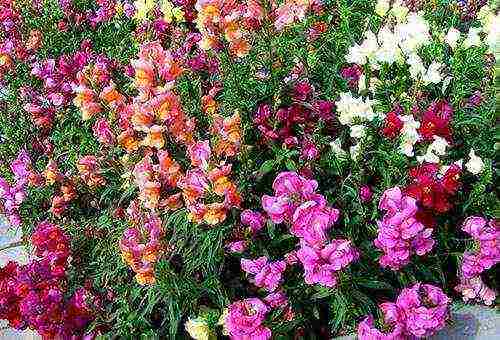
Fast growing flowers from seeds
If the seeds hatch quickly and sprout, a few days after sowing, the land in the garden will be covered with a pleasant green carpet, and soon with bright inflorescences. It is advisable to soak large grains before planting for swelling or treat them with a growth stimulator, then they hatch faster. Small seeds are best sown by mixing with sand or used tea leaves.
If you want to quickly close empty spaces after dug up bulbs and harvested primroses baskets, use fast-growing ornamental crops:
- calendula;
- marigold;
- various climbing plants;
- Snapdragon;
- cosme;
- Clarke.
In June, with the onset of steady heat, biennial plants can be sown in the garden. Flowers will appear only next year, but when breeding ornamental crops, breeders try to make the green part attractive as well. This year, the earth will be covered with carved and openwork leaves, and next season you will admire the bright flower bed.
What biennials are sown in June?
- Turkish carnation.
- Daisies.
- Viola.
- Gypsophila.
- Bell.
- Foxglove.
- Stock-rose.
Advice
If you like biennial flowers, break the flower bed into geometric shapes: triangles, squares, waves. Alternate planting so that every summer some fragments of the ornament are covered with flowers, and others with young greenery.
Any flowerbed will be decorated with sunflower. In June it is not too late to plant seeds that grow very quickly. From these giants, you can make a screen, arrange the center of the composition.Tall, sturdy stems make an excellent support for bindweed, ornamental beans or other climbing plants. And at the end of the season, cut off the ripe heads and surprise the family: what delicious seeds grow in the flowerbed! Annuals that form a large amount of green mass are an excellent raw material for compost in the garden.
Flowers will decorate not only the dacha. Sow unpretentious annuals in a flower bed near your high-rise building, in boxes on the balcony. Unfortunately, now all city yards have turned into parking lots, but if there is a piece of land, it is not difficult to dig it up and throw grain. All summer, when people in a gloomy sleepy state begin to leave the house for work, flowers will give them a good mood.
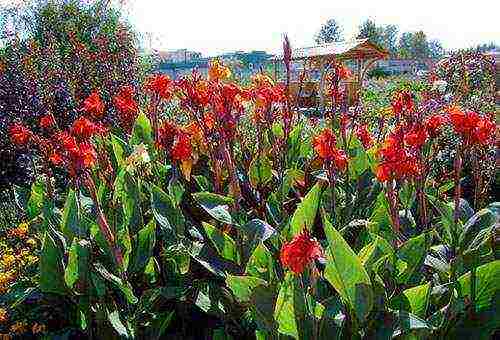
Planting perennials
In June, it's time to get the tubers of heat-loving crops from the storage and plant them on a flower bed in the garden. Dahlias have long been asking for open ground. Leave 3 shoots and bury the rhizome in the flower bed. When 4 pairs of leaves are formed on the stem, pinch the top, and more flowers will develop.
If you haven't planted gladioli bulbs in May, it's not too late now. Have you forgotten about the daylily? Hurry up, June is the deadline for spring planting of rhizomes. It's time to plant cannes too. If you do everything right and quickly, many bushes will have time to bloom this season.
If the weather was dry for a long time before planting, dig up the earth the day before and spill it well with water. Make large holes for the rhizomes, which should be loose in the soil. So that all perennials in the garden begin to develop actively, put fertilizers in the holes. After planting, water the soil again abundantly and add mulching material.
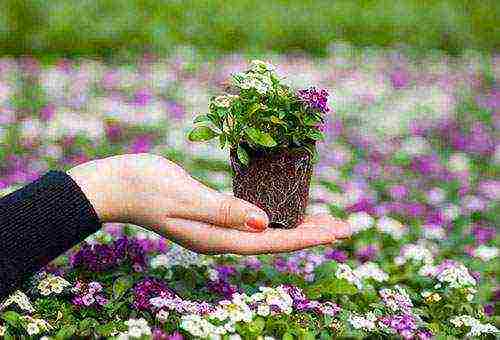
Transplanting
Seedlings of cold-resistant flowers have already been planted in May, now it's time to move the most delicate plants to open ground. If the nights in your area are cold, a week before transplanting, start hardening the seedlings: first let them sleep on a loggia or an open veranda under cover, and then without any protection.
What capricious plants can be planted in a flower bed when the threat of frost passes?
- Amaranth.
- Begonia.
- Petunia.
- Balsam.
- Zinnia.
For a transplant, it is better to choose a cloudy, cool day. Plant in damp soil, then be sure to water to compact the soil. Until the flowers take root, cover them from both the midday sun and the cold of the night.
June is the best time to purchase rhizomes and seedlings without material costs. Your neighbors in the garden have already filled all the flower beds, and the planting material has been prepared with a margin. What to do with the surplus? It is a pity to throw away living plants, but there is no place in the country anymore. You can talk to friends, they will gladly give you some seedlings. Just do not forget the custom - you need to give small money for the plants. It is believed that after this, both you and your neighbor will grow well.
If you want the flower bed in the country house to quickly become covered with a multi-colored carpet, you can grow seedlings of annuals, and in June plant them in open ground in the garden. Often, by this time, some seedlings are already beginning to form buds. You don't even need to transplant, and in the spring sow seeds in flowerpots, pots and containers. Warmth will come, and you will take the containers outside and place them in the flower garden, along the paths or next to the benches.
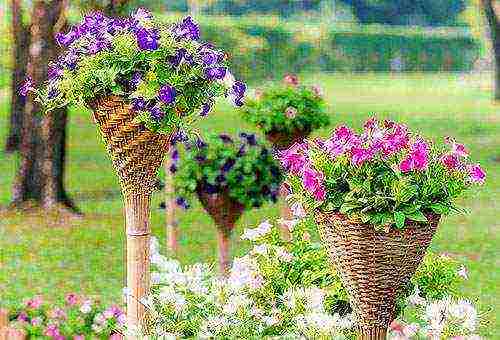
Features of summer landing
In June, the soil is often not as wet as in spring; it will be difficult for plants to take root in hot and dry times. If you are just setting up a flower garden on the ground in the summer, where nothing has grown this year, dig up and moisten the soil well on the eve of planting so that the soil is saturated with water. Water the seeds well and cover with foil until germination so that the earth does not dry out. In extreme heat, shade the crops, otherwise the seeds will simply boil in the hot soil.
Perennials and seedlings are best planted on a cloudy day.Look at the forecast, it is desirable that the sun in the country is not too bright for several days after planting. If this is not possible, plant in the evening so that the first hours after transplantation pass in the cool night. Flowers need to be watered well and protected from the sun for the first days. The land under summer plantings must be mulched: with extreme heat and dryness, moisture from the soil will evaporate in a few hours.
Plants in pots and containers are particularly affected by heat and lack of moisture. If it is easy to cover them from the sun, then not all summer residents can constantly water. When planting, you can add a hydrogel to the soil, it will absorb water, and then it will release it in small portions. Cover the surface of the earth between the flowers with decorative pebbles.
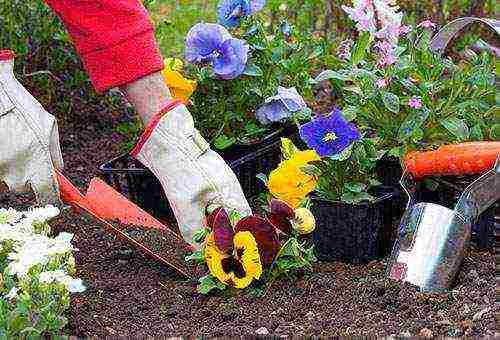
June works in the flower garden
In early summer, in addition to planting new flowers, one should not forget about caring for other inhabitants of the flower garden. Many plants in the garden at this time vigorously develop green parts that need nitrogen. If you notice that the leaves become light, and the growth of the bush slows down, feed the flowers with urea or ammonium nitrate.
Some ornamental crops are already producing buds in June. The formation of inflorescences takes a lot of nutrients. Be sure to feed the plants, make sure that the preparation contains phosphorus. You can use complex fertilizer, organic matter, or some other preparation.
Don't forget about plants in containers, flowerpots, and hanging planters. Their roots cannot get food from the deep layers of the soil, and with a lack of the necessary components, a beautiful bush will not form. Top dressing in June is very necessary, but in everything you need to observe the measure. Some growers believe that if ornamental plants are not eaten, excess fertilizer will not harm them. It can hurt, and very badly. An excess of nitrogen causes the rapid development of greenery to the detriment of the formation of buds, overfed plants often become sick and deformed.
In the heat, in the absence of rain, the grass in the meadows can dry out, but in the fertilized watered flower beds in the country, weeds grow with terrible force. If you have not mulched the land, you will have to do weeding both in young plantings and in a flower bed with adult perennials. Be careful not to pull out newly established seedlings with a long weed root. Do not use deep cultivators near plants whose root system is close to the ground.
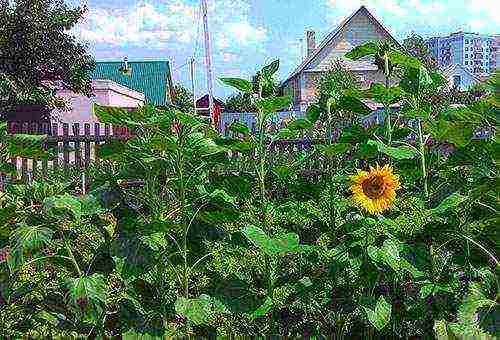
Conclusion
June is a very hot time to work in the flower garden. Primroses have faded, containers with bulbous plants are removed, you need to sow empty places in the garden. A huge number of annuals quickly sprout, and after a couple of months, buds and flowers will appear. There are many ways to decorate a summer composition. Tall sunflowers and climbing plants will create a natural screen for objects you want to hide, or a backdrop for low bushes. Using flowers of different heights, you can add volume to the flower bed. You can lay out an ornament or drawing with inflorescences of contrasting colors.
In June, you can plant biennial flowers in the country, which will bloom next season, plant seedlings of heat-loving crops and rhizomes of perennials. Do not forget that in summer there is not so much moisture in the soil, water the area well in advance and wait until the soil is saturated with water. There are plants that do not tolerate dry air - decorative moss, wet pebbles, or open containers of water placed on the ground can become an excellent humidifier.
Heat and bright sun have a bad effect on the survival rate of plantings. At first, create a shadow for them, the flowers will have time to bask in the sun when they take root. That's all the secrets of the June planting of ornamental plants. Learn to choose the right types of flowers according to the timing of their sowing, immediately fill the vacated places with seedlings or rapidly germinating seeds, and there will always be beautiful well-groomed flower beds in your country house.
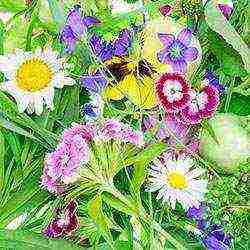 With the onset of stable warm weather, it is time to plant seeds in open ground. Everyone who has a personal plot tries to ennoble it as much as possible, but what if not flowers are the first assistants in this? What flowers can you plant in June? Let's take a closer look.
With the onset of stable warm weather, it is time to plant seeds in open ground. Everyone who has a personal plot tries to ennoble it as much as possible, but what if not flowers are the first assistants in this? What flowers can you plant in June? Let's take a closer look.
What to choose?
In open ground, seeds of those types of flowers are sown that differ in a short growing season, that is, they germinate as quickly as possible and give the first inflorescences in the same year when they were planted. Also, perennial crops are planted in this way, they are more demanding than the previous ones, they need favorable conditions and appropriate care.
Attention! Before proceeding directly to sowing seeds, prepare the soil, this will significantly accelerate the emergence of sprouts, because the soil enriched with air and fertilizers will bear fruit.
In order to grow a beautiful flowerbed as quickly as possible, you can sow the selected area with seeds. To do this, it is preferable to choose fast-growing flowers, and after a few days you will be able to admire the first green bores that hatch through the ground. It won't take much time to wait for the first inflorescences. It is recommended to soak large seeds in water so that they swell, this will promote faster growth.

Kosmeya
Fast growing flowers that can be planted outdoors:
- marigold;
- calendula;
- cosmeya;
- clarkia;
- curly types of flowers.
These flower varieties can be sown outdoors in June. They will bloom for a long time: from July to the first frost.
Many beautiful photos of biennial flowers beckon with their appearance. The first month of summer is the best time to plant such crops: next year they will sprout and your flower bed will be irresistible. How to choose flowers for planting? You can give preference to the following options:
- daisies;
- bell;
- viola;
- Turkish carnation;
- digitalis.

Turkish carnation
It is very convenient to start your path as a gardener precisely with planting annual flowers, so you will get the necessary experience, as well as qualitatively prepare the soil for planting perennial flowers. It will be easier for you to form a beautiful flower bed.
Advice. Please note that there is no need to purchase all the seeds you like at one time, approach the issue of organizing a flower bed wisely and embody the idea, and do not set a goal to sow everything that was purchased. Otherwise, you may not achieve a harmonious look of the flower bed.
How to land correctly
Flowers in June are planted in compliance with some rules. Summer planting differs from spring and autumn planting. When planning the sowing of seeds, it should be borne in mind that soil moisture may be insufficient, because high temperatures in summer dry up the land. If the weather is extremely hot, then it will be difficult for the plants to take root and there is a possibility that some of them may not emerge.
To provide future flowers with suitable soil, it is worth performing simple preparatory work: it is good to dig up the earth so that it is enriched with air and water the soil in order to moisten it. The sown seeds must also be watered and then covered with a film so that the soil does not lose moisture, until the first shoots appear. On especially hot and dry days, it is recommended to artificially shade flowers in June, this will protect young shoots from drought and prevent leaf burns.
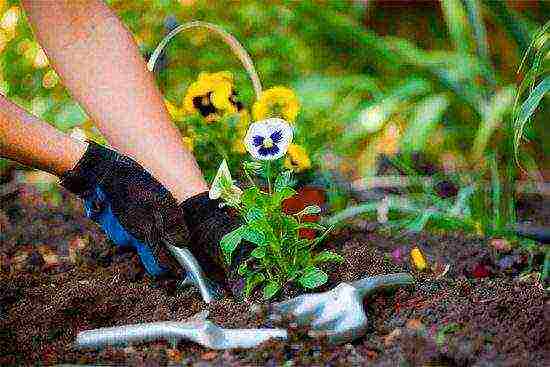
Perennial crops are best planted in cloudy weather or in the evening. It is also better to choose such a time so that after sowing, cloudy weather lasts for several days, and there is no scorching sun rays. The soil should be properly moistened after planting.
Works carried out in June
It is worth considering that it is not enough just to plant flowers in June and wait until you can admire the beauty. A flower garden is, first of all, labor and care.The seeds you sow will sprout at different times, and the flowering will not be the same either.
It is necessary to water the seedlings in a timely manner, make sure that the earth does not become lumpy, and protect young flowers from aggressive sunlight. Do not neglect the feeding of plants with various fertilizers, especially at the stage of inflorescence formation, since this process requires a lot of nutrients, the lack of which can weaken the plants, as a result of which they may die.
If you follow all the nuances of plant care, then you will be able to enjoy beautifully formed flower beds for a year.

Summing up
So, June is the most suitable month to start working in the flower garden. Free plots of land on the personal plot are perfectly occupied by annual flowers, which sprout soon enough and begin to bloom.
To decorate a flower bed beautifully, it is enough to give free rein to your imagination and, according to the photos offered on the bags with seeds, choose the methods of its formation and determine the best combinations.
When planting flowers in June, do not forget about preparing the soil, providing sufficient moisture and fertilizing with nutrients. Protect plants from direct sunlight and provide shade. Remember also that for some colors the sun can be detrimental, while others, on the contrary, do not tolerate shade well.
Add a bright accent to the composition and then your flower bed will sparkle with new colors and will attract admiring glances.
Perennial flowers: video
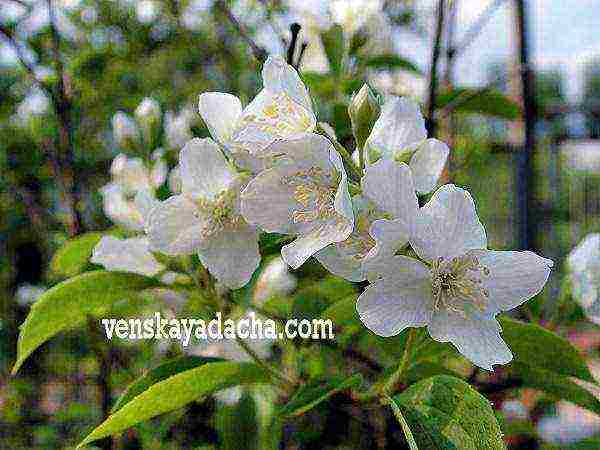
Yesterday I told you about what to do in the dacha in the flower garden in June, today the conversation will be about what flowers to plant in the dacha in June. The beginning of the month is the time to plant dahlias in the open ground. It is recommended to leave no more than three shoots on the dahlia bush. To increase the number of inflorescences, the main shoot must be pinched over the fourth pair of leaves.
Seedlings in June, you can plant any perennial and annual flowers. At the dacha, in the same summer, annuals of levkoy and gypsophila, kosmeya and calendula will bloom. Biennial flowers - Turkish carnation, stock-rose, viola - we will plant seedlings for flowering next year.
We plant seedlings of thermophilic annuals in open ground: begonias, petunias, lobelia, pelargonium balsam, zinnia, etc.
This must be done when the threat of night frosts has passed at the dacha.
You can plant any ornamental shrubs with a closed root system in the flower garden. Subsequently, they need to be watered more often and more abundantly, and, if possible, shade.
In June, it is not too late to sow the seeds of fast-growing and long-flowering annuals for flowering from July to frost. These are kosmeya, undersized marigolds, calendula, nasturtium, alyssum, godetia, lavatera and others.
You can sow biennials for flowering next year - Turkish carnation, viola, stock-rose, etc.
It is better to plant bulbs of garden gladioli in early June, when the ground is already warm enough. You can also plant seedlings of salvia, petunia, asters, tagetes and other crops in open ground.
Towards the end of June, you can plant seedlings of biennials sown in May, foxglove, bellflower, Turkish carnation. Planting scheme 20x20cm
We sow flower seeds - biennials: daisies, pansies, bells, Turkish carnations, foxgloves, etc. By autumn, they will already form strong rosettes and shoots.
We also plant cannes rhizomes in open ground. For more information on planting and breeding cannes, read Planting Cannes Reproducing Cannes and a series of notes on the cannes tag on the Vienna Cottage website. The canna flower must be fed every 10 days, alternating mullein infusion (1:10) with mineral fertilizers. In my article Feeding flowers in June, read about flower feeding, what, when and how to do in the country in order to feed the flowers correctly and on time.
What other flowers can be planted in the country in June? I must remind you that it is not too late to plant daylily bulbs. Flowers planted in some original boxes, pots, vases or containers will be a magnificent decoration in the country. Petunia, lobelia, begonia, pelargonium and balsam are great for this.


